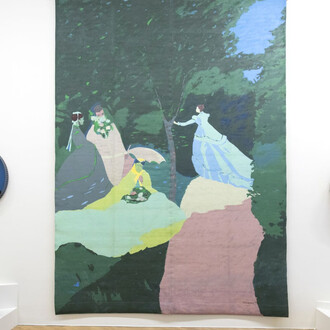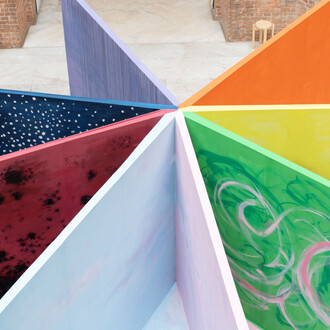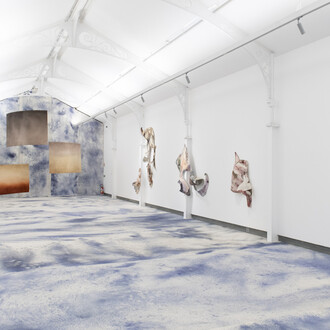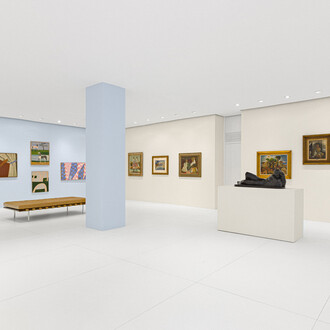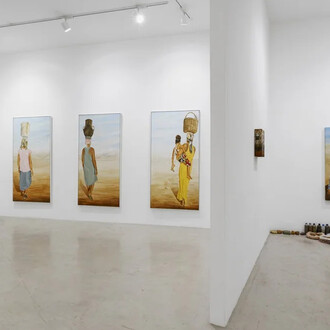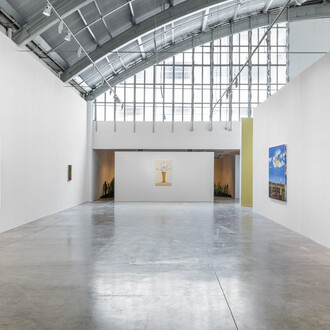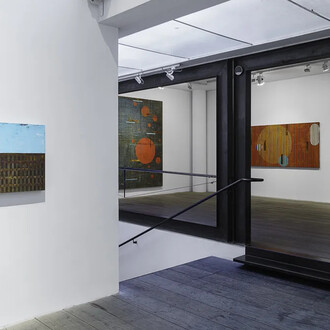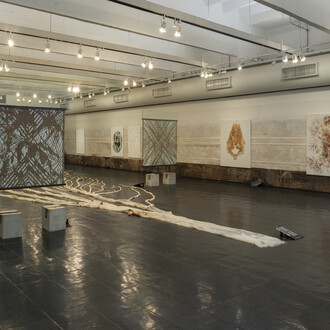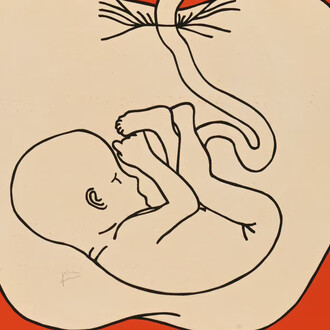In Third world, the discovered dimension, the exhibition gallery of the Pina Contemporânea building transforms into the immersive universe created by artist Gabriel Massan, with his sculptures, unevenness and textures that refer to the experience inside the canvases.
Third world, the discovered dimension, a project developed in collaboration with the Serpentine Galleries, is an immersive exhibition conceived from a decolonial perspective, from theories queer and decentralized technology strategies. In the project, the artist Gabriel Massan builds a video game set in a fantastic universe that, through a collaborative story telling, challenges the colonial concept of “exploitation” and calls on the public to rethink their actions in the world.
At the exhibition, visitors can choose between the four gaming stations to begin their journey through the Third World game or they can remain in the space to watch the players' experience in real time, through five screens in the exhibition space – as in channels dedicated to broadcasting, live games.
The first level of the game is Igba Tingbo, which in Yoruba language means “long term”. Characterized by the work of artist and clinical psychologist Castiel Vitorino Brasileiro, the experience at this stage focuses on how the player relates to “otherness”. Sòfo, which means “Empty” in Yoruba, is the second level where players are sent as HQ Agents.
Each level was created in collaboration with artists and thinkers, who contributed to the construction of dialogues, texts and narratives, even lending their voices to the characters. LYZZA, Castiel Vitorino Brasileiro, Novíssimo Edgar and Ventura Profana participated, with the last three being included in the cultural program that takes place at the mutheir in the 2nd semester of 2024.
The world was created in collaboration with the artist and rapper Novíssimo Edgar, based on his experience in São Paulo, his hometown.
Multidisciplinary digital artist Gabriel Massan (Nilópolis, Rio de Janeiro, 1996), combines storytelling and world-building techniques to create virtual ecosystems and digital sculptures that simulate and narrate stories of the Brazilian Afro-Indigenous experience.
Driven by a desire to “reveal systems of inequality rather than reproduce them,” their work investigates how the so-called Third world—an offensive classification imposed on non-industrialized and developing nations—is imagined and reported in the developed West.
The Third world game was commissioned and produced by Serpentine Arts Technologies, in partnership with the Julia Stoschek Collection and created by Tezos. The Pinacoteca de São Paulo is responsible for optimizing and translating the game into Portuguese.
The exhibition is curated by Lorraine Mendes and Tamar Clarke-Brown and sponsored by Vivo, on the Platinum quota, Bloomberg and Iguatemi São Paulo, on the Silver quota.





